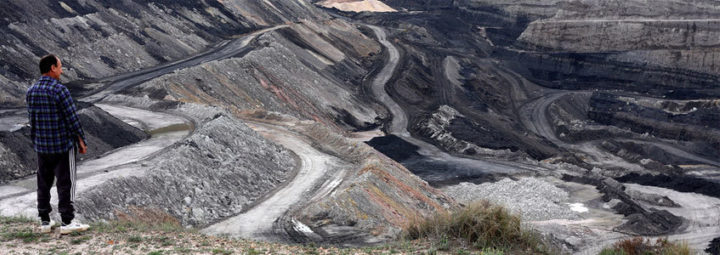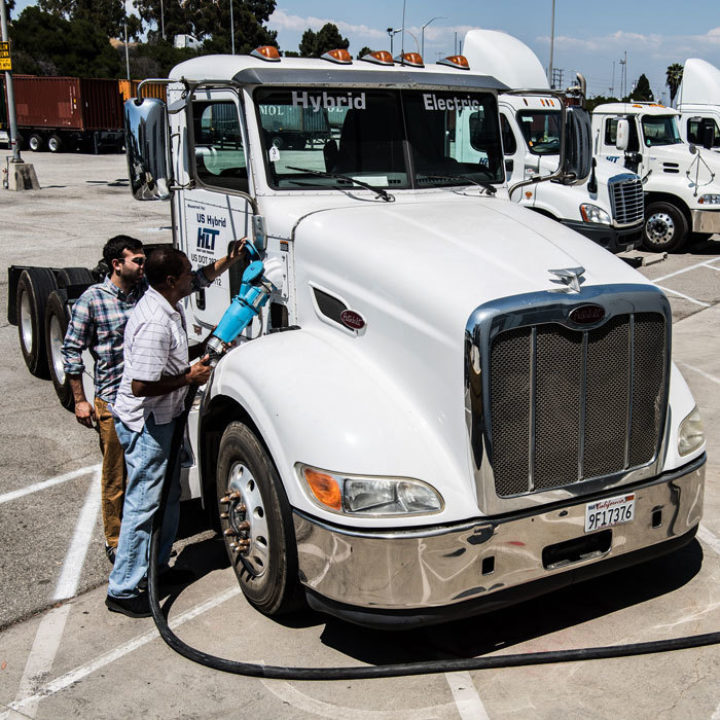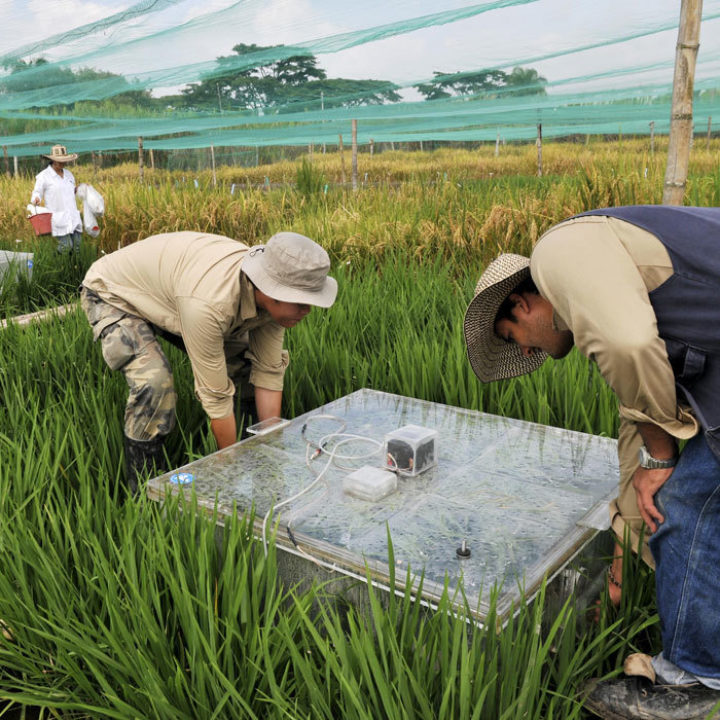IPCC and net zero: What to look for
Monday's climate report plots the answer to a 30-year question - how to prevent dangerous climate change
By Richard Black
Share
Last updated:
Thirty years ago this year, in the light of emerging scientific evidence that greenhouse gas emissions were changing the Earth's climate in potentially dangerous ways, governments decided to set up a specialist UN body to gather the evidence and work out what it meant.
That body was the Intergovernmental Panel on Climate Change, or IPCC. And on Monday, it publishes possibly the most important report in its history.
In short, it will spell out the risks of climate change using the latest science, for the first time trying to assess the likely level of impacts at 1.5 degrees Celsius of global warming as well as at higher levels. And it will spell out quite precisely the rate at which carbon emissions need to fall in order to give a reasonable chance of hitting that lower target.
Hence it answers the big question that governments first posed when they set up the IPCC 30 years ago: exactly what do we need to do to halt climate change below a commonly-agreed 'danger' threshold?
Here are five issues that we can expect the report to look at closely, if not always to answer completely.
Can the 1.5ºC target be achieved?
The IPCC won't say explicitly 'yes' or 'no' - it doesn't do things that way. However, judging by leaked earlier versions of the report, the answer would appear to be a qualified 'yes'. Qualified by two things: the need for urgent commitment, and for luck.
The scale of the transformation needed is big; really big.

The essentials are that emissions of carbon dioxide need to fall to 'net zero' around mid-century. Emissions of other greenhouse gases such as methane need strict curbs too. And no scientists have been able to produce a scenario leading to the 1.5ºC target that do not contain either copious use of 'negative emissions' or widespread changes in lifestyles, such as sharp falls in meat-eating and flying.
More on that and on the 'luck' part of the equation below.
So while the main message of the report will be 'yes, we can', that doesn't necessarily translate to 'yes, we will'.
Why should we aim for 1.5ºC?
In signing the UN climate convention in 1992, governments committed to 'prevent dangerous anthropogenic interference with the climate system'.

What constitutes 'dangerous' climate change is a tough question in that a level of climate change that might be generally manageable in Western Europe or the United States, say, may pose an existential threat to a Pacific Island nation or a community living in the shifting delta of the Ganges. Or, for that matter, to entire ecosystems such as coral reefs.
Until the 2015 Paris Agreement, the politically-agreed target had long been 2ºC. However, developing countries lobbied during the Paris summit for a lower figure, and the eventual agreement includes a commitment from all governments to keep global warming 'well below 2ºC' and to aim for 1.5.
Scientists and economists have had their heads down over the last couple of years attempting - really for the first time - to get a handle on how impacts would differ between 1.5ºC and 2ºC
In some areas, such as the number of people exposed to serious heatwaves and the impacts on nature, they've come up with striking conclusions. In other areas, the answers are less clear-cut. We've summarised the main points here, while CarbonBrief has produced a much deeper dive here.
Across the piece, it's clear that both the impacts and the risks are higher at 2ºC than at 1.5. But the other message from this part of the report is that the impacts at 1.5ºC aren't exactly negligible. A fourfold increase in the number of people exposed to serious levels of heat in poor parts of the world and loss of 70-90% of coral reefs are pretty major in anyone's book.
How do we get there?
If governments agree that they want to fulfil the pledge they made in the Paris summit and make a serious effort to keep global warming to 1.5ºC, the key phrase is 'net zero'.
By around mid-century, carbon dioxide emissions globally need to be brought as close to zero as can be, with those that cannot be eliminated being compensated for with 'negative emissions' - approaches, either natural or technological, that suck as much CO2 from the air as is being produced. Negative emissions approaches will also be needed to compensate for continuing emissions of methane, nitrous oxide and other greenhouse gases.
The central part of this, and the part that will cause some governments and some businesses the most angst, is the almost complete elimination of fossil fuel use. To put this in context: it is a little over 300 years since Thomas Newcomen invented the first efficient steam engine. If you want, you can call this 'the dawn of the industrial fossil fuel age', during which we've burned more and more and got rich in the process. Stopping climate change at 1.5ºC means reversing this in just 30 years.
In virtually every sector of the economy, technologies exist that can get to or very close to zero. That goes for electricity, land transport, housing, and most industries. The main issue is the longevity of infrastructure: once fossil fuel-powered kit is in place, it gets used, often for decades.
It's worth pointing out that even if governments wanted to hit the old global warming target of 2ºC, science is clear that net zero is still the prescription. It just has to arrive a bit later. So the 1.5ºC target adds urgency, but doesn't change the end goal.
What are the unknowns?
I referred earlier to luck. And even with the strongest feasible emissions cuts, reaching 1.5ºC will need its fair share.

The most important unknown of all is that we do not know and cannot know precisely how the planet's atmosphere and oceans will respond to a given concentration of greenhouse gases: we are after all in the middle of a giant, planetary-scale experiment without precedent or parallel.
Scientists can estimate how much more carbon dioxide can be emitted to give an evens chance, or a 66% chance, of staying below the 1.5ºC target - this much will be in the IPCC report, and the consensus result is reflected in the 2050 date for net zero emissions. But the fact that we are talking about chances means that we cannot be sure. The planet might warm faster or slower than the average that scientists project.
Luck also means that feedbacks are not triggered on the way. If, for example, warming releases frozen methane from the Arctic into the atmosphere, that will accelerate climate change. So would a faster than expected dieback of the Amazon rainforest. These risks are larger if we end up on an 'overshoot' trajectory, where global warming exceeds 1.5ºC before being brought back down with copious amounts of negative emissions.
Finally, negative emissions are also something of a leap of faith. We know that computer models of the climate describe quite well the response to rising greenhouse gas concentrations; concentrations have after all been rising for a century and half, so models can be compared against reality. But do they describe accurately what happens if we suck carbon dioxide from the air and the concentration falls? We don't know, because that reality is not within our experience.
What needs to happen next?
Essentially, one thing... emissions need to peak and start falling, and soon.
Although it is tempting to look to international processes to deliver an emissions peak, the key really lies in national programmes. The global plateau in emissions from 2014-16 - unpredicted by anyone - was largely the result of policies enacted in a single nation, in this case China.
It is clear that while zero-emissions land transport, industry and heating are feasible, they will not happen overnight. Therefore one way of looking at the immediate priorities is to do more of what is proven to work: boosting energy efficiency, and generating electricity with wind and solar power.
Another way to look at it is this: simply, stop doing the stupid stuff.
Don't build coal-fired power stations. Don't denude forests of trees. Don't allow peat bogs and wetlands to dry out. Don't build houses and businesses in ways that imply high emissions from heating or transport.
Looked at that way, the first steps on a pathway that may deliver the Paris Agreement pledge - 'may', because of the luck element described above - aren't that hard. The second and third steps might be harder - but stopping doing the stupid stuff, right now, ought not to lie outside the wit of a species that calls itself Homo sapiens.
Share